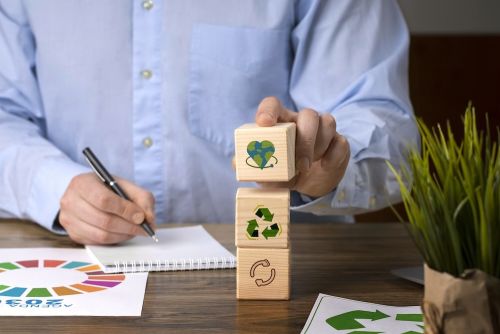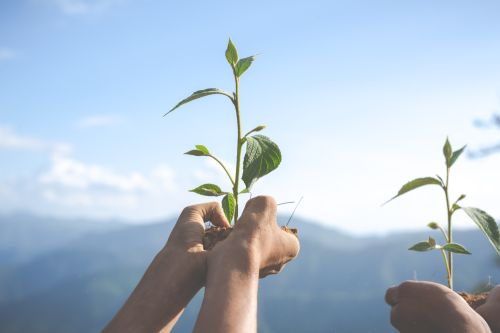Water Conservation and Management: Strategies for Sustainable Water Use


Cut through the green tape
We don't push agendas. At Net Zero Compare, we cut through the hype and fear to deliver the straightforward facts you need for making informed decisions on green products and services. Whether motivated by compliance, customer demands, or a real passion for the environment, you’re welcome here. We provide reliable information—why you seek it is not our concern.
The Impact of Climate Change on Global Water Resources
Climate change is profoundly altering the earth's hydrological cycles, with significant implications for global water resources. Freshwater availability, a critical component of human survival and ecological health, is increasingly under threat due to the complex interplay of rising temperatures, shifting precipitation patterns, and extreme weather events.
The Effects on Freshwater Availability
Increased Frequency and Severity of Droughts
Droughts are becoming increasingly frequent and severe in many regions around the world due to climate change. Warmer temperatures, driven by global warming, lead to higher evaporation rates, which in turn reduce soil moisture and lower water levels in rivers, lakes, and reservoirs. This phenomenon is particularly pronounced in arid and semi-arid regions, where water scarcity is already a critical issue. As a result, these areas are facing even greater challenges in maintaining adequate water supplies.
The impacts of these more frequent and severe droughts are wide-ranging. Droughts significantly reduce agricultural productivity, which can lead to food shortages and increased prices. They also place a heavy strain on water supply systems, making it difficult to meet the needs of both people and industries. Additionally, the increased risk of wildfires during droughts poses a further threat to ecosystems, leading to the loss of biodiversity and degradation of natural habitats.
Intensified Flooding and Extreme Rainfall Events
While some regions are grappling with drought, others are facing an increase in flooding due to more intense and frequent heavy rainfall events. As the atmosphere warms, it holds more moisture, leading to torrential downpours that can overwhelm drainage systems and result in flash floods. This stark contrast between drought and flooding highlights the uneven and unpredictable impacts of climate change on global water resources.
Flooding can cause widespread damage to infrastructure, displacing populations and contaminating freshwater supplies. The disruption to agricultural production caused by floods can lead to food insecurity and significant economic losses. Moreover, the recovery from such events often requires substantial investment and can take years, further straining the resources of affected communities.
Changing Precipitation Patterns
Climate change is also altering traditional precipitation patterns, leading to shifts in the timing, intensity, and distribution of rainfall. Some regions may experience prolonged dry spells followed by intense rainfall, while others may see a reduction in overall precipitation. These changes complicate water management, particularly in areas that depend on predictable seasonal rainfall for agriculture, drinking water, and hydropower.
Inconsistent water availability poses significant challenges for the planning and maintenance of water supply systems. Regions that once relied on steady, predictable rainfall may now find themselves dealing with either too much or too little water, often within the same year. This unpredictability requires a more flexible and adaptive approach to water management to ensure that communities can continue to meet their water needs.

Adapting Water Management Practices
Enhancing Water Storage and Infrastructure
To mitigate the impact of changing precipitation patterns, it is essential to improve water storage capacity through the construction of reservoirs, dams, and rainwater harvesting systems. Additionally, upgrading infrastructure to handle both droughts and floods will help ensure more reliable water supplies. For instance, multipurpose reservoirs that can store water during wet periods and release it during dry spells are crucial for maintaining a stable water supply. In urban areas, improving drainage systems to manage floodwaters is also vital to prevent the damage caused by intense rainfall events.
Implementing Sustainable Agriculture Practices
Agriculture, which accounts for a significant portion of water use worldwide, must adopt more water-efficient practices to cope with changing rainfall patterns. Techniques such as drip irrigation, crop rotation, and the use of drought-resistant crops can reduce water demand and help farmers adapt to less predictable water availability. Precision farming, which uses technology to optimize water use, and agroforestry, which integrates trees into farming systems to improve water retention and soil health, are promising strategies for sustainable agricultural practices.
Developing Integrated Water Resource Management (IWRM)
Integrated Water Resource Management (IWRM) is a holistic approach that considers the interconnections between different water users, the environment, and the broader economic and social context. It involves coordinating the management of water, land, and related resources to maximize economic and social welfare without compromising the sustainability of vital ecosystems. Implementing IWRM requires collaboration between various stakeholders, including governments, communities, and the private sector, to develop comprehensive water management plans that are flexible and adaptive to changing climate conditions.
Investing in Climate-Resilient Infrastructure
Building infrastructure that can withstand the impacts of climate change is critical to ensuring the long-term availability of water resources. This includes constructing levees, flood barriers, and water treatment facilities designed to cope with extreme weather events. Coastal cities, for example, can invest in sea walls and storm surge barriers to protect against rising sea levels and storm surges. Inland areas might focus on floodplain restoration and the development of green infrastructure, such as wetlands, which can absorb excess floodwater and reduce the impact of floods. Investing in such climate-resilient infrastructure is essential to safeguarding communities from the growing threats posed by climate change.
Understanding Water Footprint
A water footprint measures the total volume of freshwater used directly and indirectly by an individual, community, or business to produce goods and services. This includes not only the water consumed directly, such as in drinking and household use, but also the water embedded in the production of food, clothing, and other products.
For example, producing a single cotton t-shirt can require as much as 2,700 litres of water, considering the water needed to grow the cotton, process the fibres, and manufacture the shirt. Similarly, the water footprint of a beef burger can be as high as 2,000 litres, taking into account the water used to raise cattle, grow feed crops, and process the meat. By understanding the water footprint associated with different products and activities, consumers and businesses can make more informed choices that contribute to water conservation.
Case Studies: Water-Efficient Processes and Technologies in Industry
Industries across various sectors are increasingly recognizing the importance of water conservation, both for environmental sustainability and economic efficiency. To minimize their water footprint, many companies are adopting water-efficient processes, recycling wastewater, and investing in innovative technologies.
1. Coca-Cola: Water Replenishment and Recycling
Coca-Cola has made significant strides in reducing its water footprint through its global water stewardship program. The company set an ambitious goal to replenish 100% of the water it uses in its beverages and production processes. To achieve this, Coca-Cola has implemented a range of water-efficient processes, such as optimizing water use in bottling plants and reducing water loss during production.
One of the key initiatives is wastewater recycling. Coca-Cola's bottling plants are equipped with advanced water treatment systems that allow the company to recycle and reuse wastewater within the production process. This approach has enabled Coca-Cola to significantly reduce its freshwater intake, particularly in water-scarce regions. Additionally, Coca-Cola invests in community water projects to improve water access and quality, further contributing to its water replenishment goals.
2. Nestlé: Sustainable Water Management in Agriculture
Nestlé, one of the world's largest food and beverage companies, has focused on improving water efficiency throughout its supply chain, particularly in agriculture, which accounts for a significant portion of its water footprint. The company has partnered with farmers to promote sustainable water management practices, such as drip irrigation, which significantly reduces water use compared to traditional irrigation methods.
In Pakistan, for example, Nestlé has implemented the Sustainable Agriculture Initiative, which encourages farmers to adopt water-saving techniques and technologies. Through this initiative, Nestlé has helped reduce water consumption in dairy farming, one of the most water-intensive agricultural activities. The company also uses treated wastewater for non-food purposes, such as landscape irrigation, to further reduce its freshwater use.
3. Ford Motor Company: Water Conservation in Manufacturing
Ford Motor Company has made substantial progress in reducing water use in its manufacturing processes. One of Ford's key initiatives is the implementation of its "zero water waste" strategy, aimed at reducing freshwater consumption and increasing the use of recycled water in its plants.
In its assembly plant in Chennai, India, Ford has implemented a wastewater treatment and recycling system. This system allows the plant to reuse 100% of its wastewater for various processes, including cooling, painting, and general cleaning. Additionally, Ford has invested in dry machining technologies, which reduce the need for water in metal cutting and other manufacturing processes. As a result, the company has reduced its water consumption per vehicle produced by over 75% since 2000.
4. Intel: Innovative Water Recycling and Reuse
Intel, a leading semiconductor manufacturer, has prioritized water conservation as a key component of its environmental sustainability efforts. Semiconductor manufacturing is highly water-intensive, requiring large volumes of ultra-pure water for production processes. To address this, Intel has invested in water recycling technologies that allow it to reclaim and reuse water multiple times within its facilities.
In 2021, Intel opened a water reclamation plant that recycles approximately 1 billion gallons of water annually. The recycled water is used for landscaping, cooling towers, and other non-potable applications, significantly reducing the plant's reliance on freshwater sources. Intel has also committed to achieving a net positive water use by 2030, meaning it aims to restore more water to communities and watersheds than it consumes in its operations.
5. PepsiCo: Water Efficiency and Agricultural Water Conservation
PepsiCo has implemented comprehensive water efficiency programs across its global operations, particularly in its agricultural supply chain. The company has adopted precision agriculture techniques, which involve using data and technology to optimize water use in farming. This includes the use of soil moisture sensors, weather data, and satellite imagery to precisely manage irrigation.
In Mexico, PepsiCo's "Agua para el Futuro" program focuses on water conservation and watershed restoration. Through this program, the company has worked with local farmers to implement water-saving irrigation techniques and has supported the restoration of key watersheds to enhance water availability for both agricultural and community use. PepsiCo has also invested in wastewater treatment and reuse systems in its manufacturing plants, helping to reduce its overall water footprint.

The Role of Policy in Water Conservation
Effective water management policies can drive significant improvements in how water is used, conserved, and allocated, impacting everything from agricultural practices to urban water use. For example, in Australia, the National Water Initiative has been a cornerstone policy in promoting sustainable water management across the country. This policy framework encourages water trading, sets clear guidelines for water entitlements, and emphasizes the need for water planning that takes into account environmental, economic, and social factors. As a result, Australia has made significant strides in managing its scarce water resources, particularly in regions prone to drought.
In the European Union, the Water Framework Directive (WFD) serves as a comprehensive policy that aims to achieve "good status" for all water bodies by promoting sustainable water use, reducing pollution, and protecting aquatic ecosystems. The WFD has been instrumental in improving water quality across Europe, enforcing strict pollution controls, and encouraging member states to adopt integrated water management approaches. Additionally, policies like California's Sustainable Groundwater Management Act (SGMA) in the United States highlight the importance of regulating groundwater extraction to prevent overuse and depletion of this critical resource. By setting clear regulations and requiring local agencies to develop groundwater sustainability plans, SGMA aims to ensure that groundwater resources are managed sustainably for future generations.
The Economics of Water: Pricing and Conservation
Economic factors, including water pricing, subsidies, and financial incentives, significantly influence how water is used and conserved. Water pricing, in particular, is a critical tool that can encourage efficient water use by reflecting the true cost of water supply and treatment. When water is priced appropriately, it signals to users the value of the resource, incentivizing them to use it more efficiently and avoid waste. For instance, tiered water pricing systems, where higher usage levels incur higher rates, have been implemented in various regions to encourage conservation. In places like Singapore, water pricing is combined with public education campaigns and incentives for water-saving appliances to promote conservation among households and industries.
Subsidies also play a significant role in water use, particularly in agriculture, where water-intensive crops are often heavily subsidized, leading to overuse and inefficiency. Reforming these subsidies to support more sustainable practices, such as drip irrigation or the cultivation of less water-intensive crops, can lead to significant water savings. Moreover, financial incentives for water conservation, such as rebates for installing water-efficient appliances or adopting water-saving technologies in agriculture and industry, can further encourage users to reduce their water consumption.
Potential reforms in the economics of water use include implementing full-cost pricing, where the price of water reflects the costs of extraction, treatment, distribution, and environmental impacts. This approach ensures that water users bear the true costs of their consumption, promoting more sustainable use. Additionally, developing water markets, where water rights can be traded, allows for more efficient allocation of water resources, particularly in regions where water scarcity is a growing concern. Such economic reforms are essential for ensuring that water is used wisely and conserved for future generations.

More related content

Extended Producer Responsibility (EPR) for Packaging: Country-by-Co...

What Is Scope 3? Understanding Indirect Emissions and Their Regulat...

The EU's Omnibus Proposal: A Deep Dive
